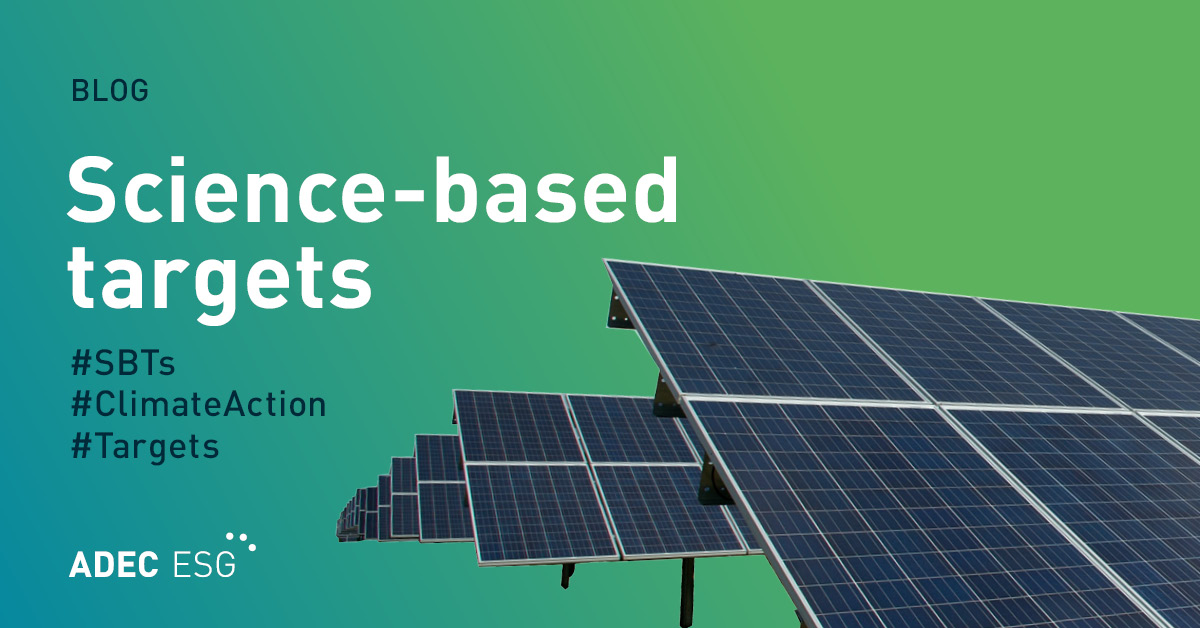According to CDP, more than 80% of the world’s 500 largest companies established emissions reduction or energy-specific targets in the 2014-2015 fiscal year. Since you cannot manage what you do not measure, setting emissions reduction targets allow companies to measure and track the progress of their annual GHG emissions associated with direct operations and their supply chains.
What is an emissions reduction target?
There are two types of targets which companies can set to reduce their GHG emissions. The first type is an absolute emissions reduction target. What this means is that companies commit to reducing their emissions to a specific amount compared to an established base year. For example, Company A has an absolute target to reduce their total Scope 2 emissions to 12% of their 2014 base year emissions. Their target year for completion is 2020. Absolute targets are ambitious and show that companies are more transparent about their emissions reduction progress. However, absolute emissions are sensitive to changes in business (e.g., revenue, production, number of employees, etc.) and can be challenging to introduce for many businesses.
The second type of emissions reduction targets are called intensity targets. An intensity target is one that describes emissions reductions that have been normalized to a business metric compared to normalized emissions for a base year. For intensity targets, emissions can be normalized using a variety of business metric denominators including building area, weight of material produced, kilometers traveled, revenue, FTE employee, and megawatt hours consumed/produced. The format of this intensity target should be the amount of CO2e per business activity.
For example, Company B has set an intensity target to reduce a subset of their Scope 1 emissions due to refrigerant usage. Let’s say these emissions are normalized by dividing them by the total area of production facilities in square meters. So if the company would like to reduce their 2016 emissions intensity to 20% of their 2012 baseline emissions intensity, they need to take action so that their emissions per area ratio for 2016 is reduced to 20% of what it was in 2012. Intensity targets are less transparent about the actual (absolute) amount of emissions being reduced, but they allow companies to make reductions while growing in business.
How will target setting change in 2016?
In previous years, CDP asked companies to disclose their progress on any voluntary absolute or intensity targets in question CC3.1 of the response. While setting voluntary targets is admirable, companies globally are raising their ambitions around target-setting to ensure their long-term sustainability and profitability, driving bolder business action. Consequently, some companies have taken the next step in target-setting: science-based targets.
In addition to setting voluntary targets, companies will also have the opportunity to report their progress on science-based targets in their 2016 CDP response. Similar to previous years, details on science-based targets will be reported in question CC3.1. For each absolute or intensity target set, a company should indicate whether or not it is a science-based target.
ADEC ESG is a leading provider of environmental and sustainability solutions, with expertise in delivering fully integrated consulting, software and data management services. We help governments and organizations improve performance by recognizing challenges that need to be addressed and offering solutions for implementation. For more information about improving your CDP performance, download our white paper, ‘4 Steps for Improving your CDP Performance’.




